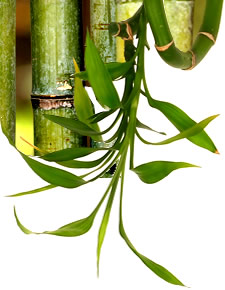

Articles |
EchidnasWhat has the beak of a bird, the spines of a hedgehog, the gait of a reptile, the pouch of a marsupial, and the lifespan of an elephant? If you answered an echidna, you are correct! Echidnas may not be the most famous creatures on this planet, but fossils dating back to 100 million years ago prove that they've been around a long time. Elusive and enigmatic, these "spiny anteaters" have bewildered scientists and wildlife enthusiasts for centuries. Echidnas make virtually no noise, follow no observable routines, and lack permanent dens, making it almost impossible to track and study them. They also travel great distances; some cover home territories of 250 acres or more! Native to New Guinea and Australia, echidnas weren't even identified in the western world until 1792, when the first detailed description was published in England. Still, it took hundreds of years of technological advancements before any close study of the echidna was possible. At first glance, an observer might classify echidnas in the same family with hedgehogs. Australians have nicknamed them "porkies," after their resemblance to the porcupine. Their likeness to these mammals, however, is only skin deep. While echidnas are probably best known for their spiny backs, these spines are uniquely different from porcupine quills. Although echidnas can move their spines (and they do, especially in mating rituals and when protecting themselves), the spines cannot be easily removed from their backs, like quills are. Echidna spines are extremely strong, and have been known to puncture tires! They are actually modified hairs that have a long root extending into a special layer of muscle. If echidnas have little in common with hedgehogs and porcupines, they have much in common with their close relative, the platypus. These two species are the only known surviving monotremes in the world. Monotreme, literally translated, means "single opening," referring to the fact that these mammals have only one opening. Whereas other mammals have three openings, monotremes have one cloaca, which is used in the urinary, defecatory, and reproductive systems. In addition, monotremes are the only mammals who lay eggs, rather than give live birth. Females produce a single, soft-shelled egg 22 days after mating. Placing the dime-sized egg in her pouch, located on her belly, the female waits until ten days later when the egg hatches and a tiny, embryonic puggle emerges. The mother produces milk, as do all other mammals, but she has no nipples. Instead, the puggle suckles milk from the pores of two milk patches in her pouch. By 45-55 days old the puggle will have begun developing spines, and the mother (understandably) expels it from her pouch. She will have dug a nursery burrow in preparation, and here the puggle will remain for another six months, suckling when its mother returns to the burrow, about every five days. By the time the young echidna leaves its burrow it will be prepared for the rigors of survival. At approximately the same size and weight of a human newborn, the adult echidna has a narrow, elongated snout and short, strong limbs. Its legs protrude from the sides of its body, rather than underneath, giving the echidna its reptile-like gait. Echidnas have large, backward-pointing claws which they use for digging. The most important equipment for survival is their long, sticky tongues. Echidnas are toothless, and use their tongues to slurp up ants, termites, worms, and insect larvae. Their Latin name Tachyglossus acculeatus means "fast-tongued and spiny." Echidnas live relatively peaceful, long lives. They have no native predator, although one species of large monitor lizards eat the spineless puggles. Non-native predators, including feral cats and pigs, dogs, dingoes, and foxes, will attack echidnas. Under attack, the echidna will roll itself into a spiny ball until the danger has passed. Vehicles pose the biggest threat to echidnas, which move slowly and are often seen disposed at the side of the roads. A second threat to echidnas is overheating. Echidnas have no sweat pores, and do not pant. They must therefore maintain a very low body temperature. It was even disputed at one time whether echidnas were even warm-blooded mammals or not, given how low their internal temperature was. Escaping these dangers, echidnas can live fifty years or more. Scientists have not been able to determine the number of echidnas in existence in the world, and have officially listed them as a protected species. It may take time, but hopefully technology will continue to aid us in the understanding of this primitive, perplexing creature. Emma Snow has always adored wild animals. Emma provides content for Wildlife Animals http://www.wildlife-animals.com and Riding Stable http://www.riding-stable.com. Bamboos A Fast Growing Tree For A Buffer - Fast Growing Arborvitae for Buffers In Bucks County The Green Giant Arborvitae is a fast growing arborvitae that is well suited for Pennsylvania. Lube Oil Purifier oil filter oil recycling oil filtrationoil purification oil filtering oil r - LV -- Lubrication Oil Purifier Application LV series oil purifier are suitable especially for purifying and restoring hydraulic oil, machine oil, coolant oil and various other lubrication oil. NSH VFD Transformer oil Treatment Oil Purifieroilpurificationoil filtrationoil recyclingoil re - VFD(oil Treatment, oil Filtration, oil Purification, oil Recycling, oil Filter, oil Restoration, oil Regeneration, oil Filtering, oil Reclamation) series is mainly used to improve the properties of insulation oil. supply SinoNSH VFD DoubleStage HighEfficiency VacuumInsulation Oil Purifieroil purificationoil - VFD(oil purifier,oil purification,oil filtration,oil filter,oil treatment,oil recycling,oil regeneration,oil filtering, oil reclaim plant,oil recovery,waste managment,oil disposal,oil reclamation. supply SinoNSH LV Lubrication Oil Purificationoil purifieroildisposaloil reclamationoil restor - LV series oil purifier(oil purifier,oil purification,oil filtration,oil filter,oil treatment,oil recycling,oil regeneration,oil filtering, oil reclaim plant,oil recovery,waste managment,oil disposal,oil reclamation. more... |
© Copyright yayixm.com All rights reserved. Unauthorized duplication in part or whole strictly prohibited by international copyright law. |